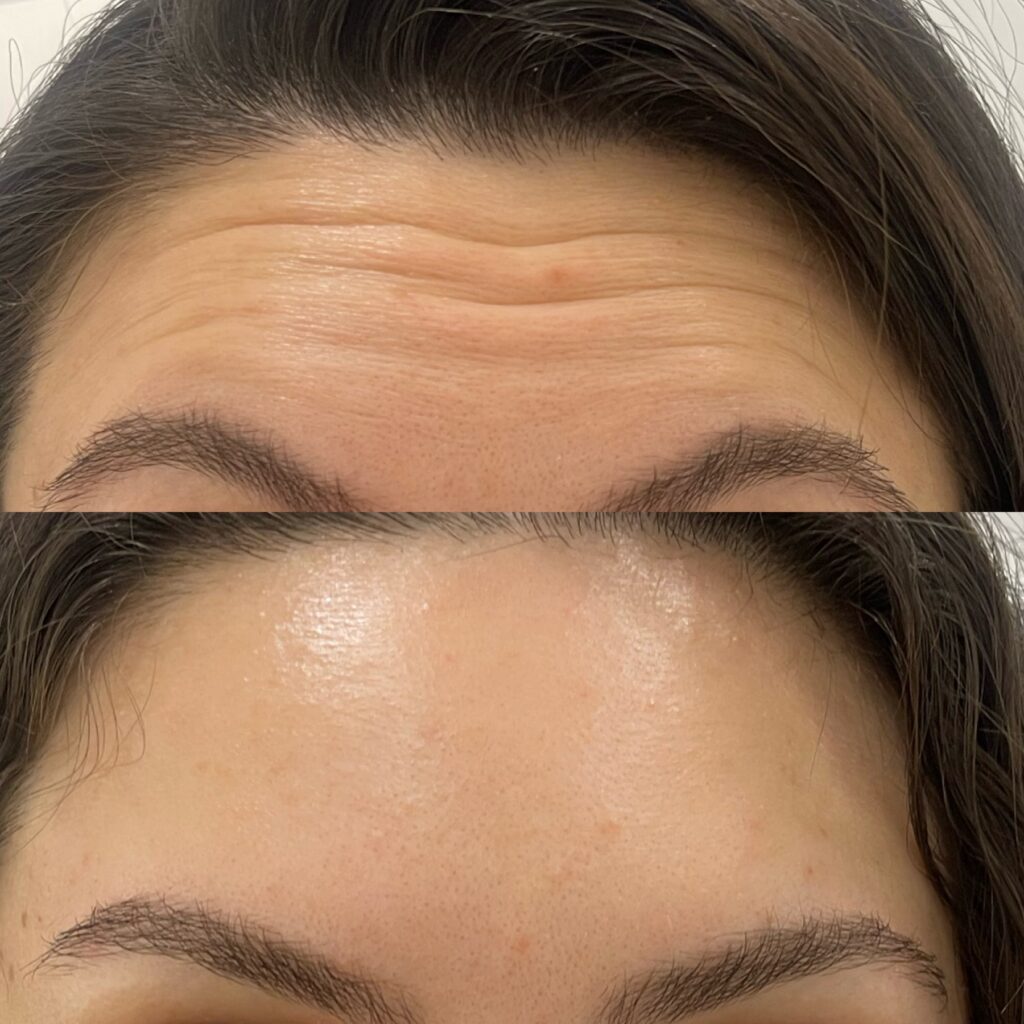Botox
How Botox Works
Neuromuscular Communication: Normally, nerve cells release a neurotransmitter called acetylcholine, which binds to muscle cells and causes them to contract. This process is a part of normal neuromuscular communication.
Botulinum Toxin Action: Botox interferes with this communication process. It works by blocking the release of acetylcholine from nerve endings. This occurs at the neuromuscular junction, where nerves meet muscle cells.
Muscle Relaxation: With acetylcholine release inhibited, the targeted muscle is temporarily paralyzed or relaxed. This prevents the muscle from contracting forcefully, reducing the appearance of wrinkles or lines caused by repetitive muscle movements.
Cosmetic Applications: In cosmetic procedures, Botox is commonly used to treat dynamic wrinkles, which are wrinkles formed by repeated muscle contractions such as those caused by facial expressions (e.g., frown lines, crow’s feet). By relaxing the underlying muscles, Botox can smooth out these wrinkles, giving a more youthful appearance.
The benefits of Botox include
Wrinkle Reduction: Botox is widely known for its cosmetic use in reducing the appearance of fine lines and wrinkles, particularly those associated with facial expressions like frowning or smiling.
Prevention of New Wrinkles: By temporarily paralyzing or relaxing targeted muscles, Botox can prevent the formation of new wrinkles caused by repetitive muscle movements.
Non-Surgical: Botox is a non-invasive and non-surgical cosmetic treatment, making it a popular choice for individuals seeking facial rejuvenation without the need for surgery.
Facial Symmetry and Lift: Botox injections can be strategically used to create facial symmetry and provide a subtle lift to certain facial features. By targeting specific muscles, Botox can address asymmetry and enhance the overall balance of the face, contributing to a more youthful and harmonious appearance. This is particularly useful in areas like the eyebrows and corners of the mouth.




